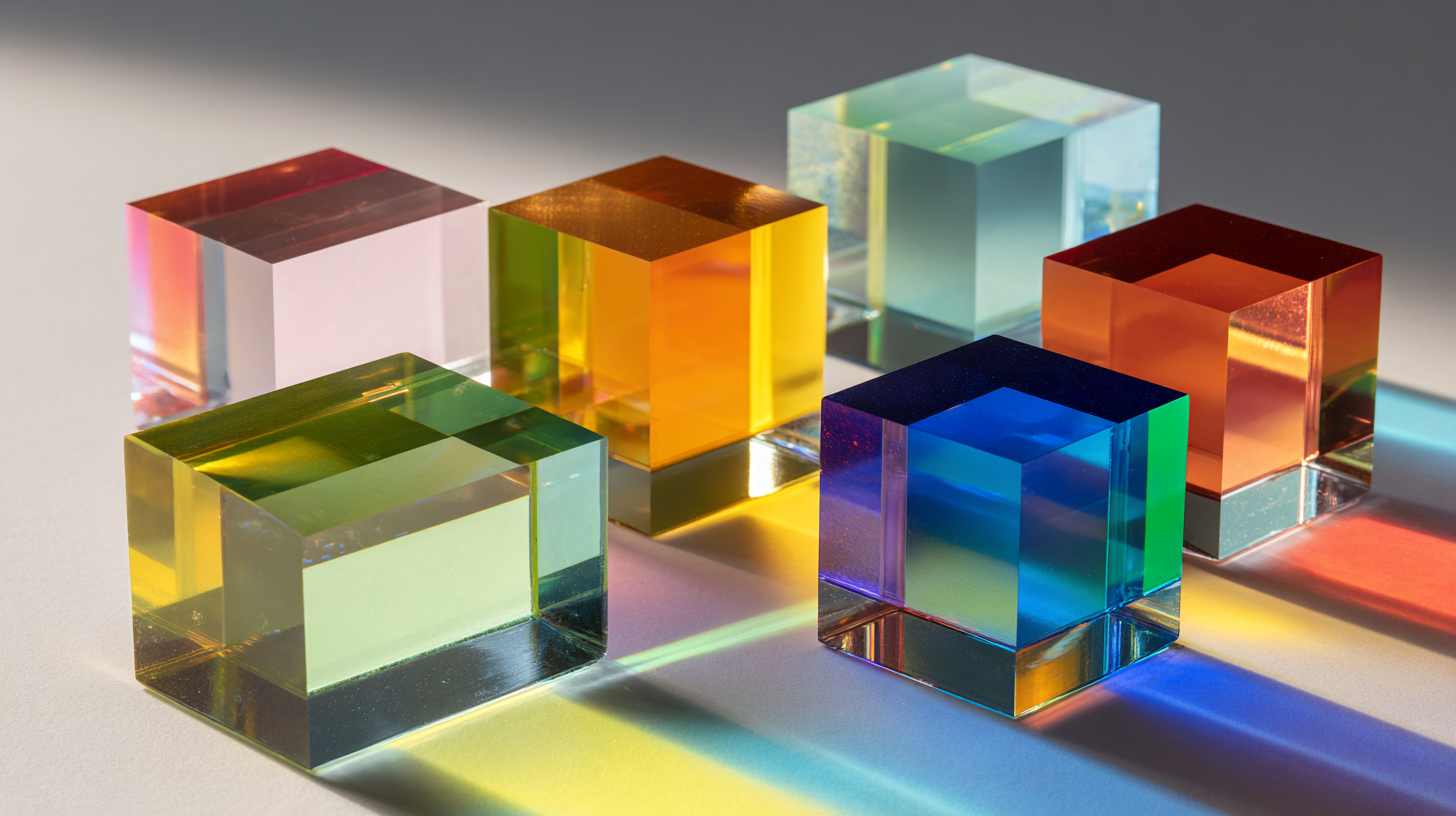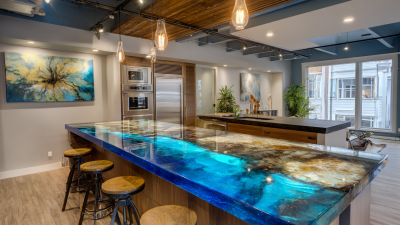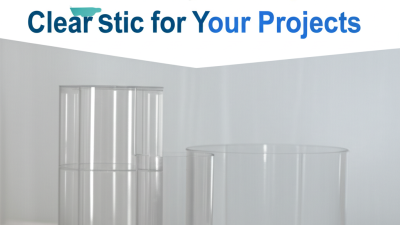Posts
The Miracle of Cast Acrylic Unveiling Its Versatile Applications in Modern Design
In the realm of modern design, cast acrylic has emerged as a transformative material, captivating the attention of architects, designers, and artists alike. This versatile substance, renowned for its clarity, durability, and ease of fabrication, offers an array of applications that challenge conventional design limits. From stunning light fixtures to intricate furniture pieces and innovative architectural elements, cast acrylic serves as a bridge between functionality and aesthetic appeal.

Its ability to mimic glass while providing greater flexibility and resistance to impact opens new avenues for creative expression. In exploring the miracle of cast acrylic, this article delves into its unique properties, varied applications, and the growing trend of incorporating this remarkable material into contemporary design, revealing why it is fast becoming a staple in the creative industries.
The Evolution of Cast Acrylic in Contemporary Design Practices
Cast acrylic has seen a significant evolution in contemporary design practices, shifting from traditional applications to innovative uses across various industries. Initially popular for its glass-like appearance and lightweight qualities, cast acrylic's versatility has allowed designers to push boundaries in architecture, interior design, and product development. This material is now celebrated for its ability to be shaped, colored, and illuminated, allowing for creative expressions that were previously difficult to achieve.
**Tips for Working with Cast Acrylic:** When choosing cast acrylic for your design project, consider experimenting with different thicknesses and finishes to achieve the desired aesthetic. Remember to account for the material's thermal properties; using proper adhesives and tools can enhance the final product's quality. Additionally, integrating lighting elements within cast acrylic designs can bring an extra layer of depth and dynamism, drawing attention to your work.
As modern design continues to embrace sustainability, cast acrylic has adapted by incorporating recycled materials and eco-friendly manufacturing processes. Its transparency and clarity make it an ideal choice for creating visually appealing displays and installations, transforming spaces while maintaining a commitment to environmentally responsible practices. By leveraging the advantages of cast acrylic, designers can create innovative solutions that resonate with contemporary values and aesthetics.
The Miracle of Cast Acrylic: Versatile Applications in Modern Design
Key Properties That Make Cast Acrylic a Preferred Material
Cast acrylic, often celebrated as a miracle material in modern design, boasts several key properties that make it a preferred choice among designers and architects. One of its most notable features is its remarkable clarity, which allows for up to 92% light transmission, providing a glass-like appearance without the added weight and fragility. This quality not only enhances aesthetic appeal but also enables designers to create striking light fixtures and signage that stand out.

Additionally, cast acrylic is highly versatile and can be easily fabricated and molded into a variety of shapes and sizes. It exhibits excellent weather resistance, maintaining its color and clarity over time, making it suitable for both indoor and outdoor applications. Its strength and durability also mean that it is less prone to cracking and breaking than glass, providing peace of mind in both functional and decorative uses.
Tips for Working with Cast Acrylic: When cutting or shaping cast acrylic, always use the right tools to avoid chipping. A table saw or laser cutter with the appropriate settings will yield the best results. Additionally, consider using protective films during transit and installation to prevent scratches, ensuring your designs remain pristine. Lastly, remember to drill slowly and use lubricants to avoid overheating, which can warp the material.
Diverse Applications of Cast Acrylic in Architecture and Interior Design
Cast acrylic, renowned for its clarity and durability, is increasingly becoming a favored material in both architecture and interior design. Its lightweight nature, coupled with the ability to mimic glass, allows designers to create striking visual elements without the associated risks of breakage. In architectural applications, cast acrylic panels can be utilized in facades, providing not only aesthetic appeal but also functional benefits such as energy efficiency and sound insulation. This versatility enables architects to experiment with light and transparency, transforming spaces into dynamic environments.
In interior design, cast acrylic offers endless possibilities for furniture and decorative elements. Its ease of fabrication allows for the creation of custom shapes, making it an ideal choice for innovative lighting fixtures, shelves, and even partitions. Designers appreciate its range of colors and finishes, enabling them to tailor pieces that enhance the overall aesthetic of a space. Additionally, cast acrylic’s resistance to UV light and weathering ensures that these designs maintain their beauty over time, making it a practical choice for both residential and commercial projects.
The Miracle of Cast Acrylic Unveiling Its Versatile Applications in Modern Design
| Application Area | Description | Benefits | Typical Thickness |
|---|---|---|---|
| Architectural Features | Used in decorative façades, partitions, and ceilings. | Lightweight, durable, and available in a variety of colors. | 3 mm - 25 mm |
| Interior Design Elements | Applied in furniture design, shelving, and lighting fixtures. | Customizable, easy to clean, and provides a modern aesthetic. | 2 mm - 15 mm |
| Signage | Used in internal and external signage, including backlit signs. | Highly visible and can be easily shaped or molded. | 3 mm - 12 mm |
| Display Cases | Ideal for retail spaces to showcase products. | UV resistant and offers a high level of clarity. | 5 mm - 20 mm |
| Art Installations | Used to create interactive and engaging art pieces. | Versatile and available in a variety of finishes and textures. | 2 mm - 40 mm |
Innovative Uses of Cast Acrylic in Product Design and Branding
Cast acrylic has emerged as a game-changer in product design and branding, offering a blend of durability and versatility that can elevate any creative project. Its transparent qualities allow designers to play with light and color, creating dynamic visual effects that can capture consumer attention. In the competitive landscape of marketing, utilizing cast acrylic can help brands stand out, reminiscent of how innovative storytelling tactics are employed by brands to connect deeper with their audiences.
Tips: When incorporating cast acrylic into product design, consider experimenting with layered designs or incorporating backlighting to enhance visual appeal. Additionally, the lightweight nature of cast acrylic allows for easy transportation and installation, making it an ideal choice for promotional displays and signage. Designers should also consider the tactile experience; combining cast acrylic with other materials can create unique textures that intrigue customers.
Furthermore, as brands look to establish themselves in the market, using cast acrylic in packaging design can convey a message of modernity and sophistication. With its limitless application possibilities, cast acrylic is setting new industry standards, positioning it as a favorite among designers seeking innovative materials to express their vision.
Sustainability and Environmental Considerations in Acrylic Production
The production of cast acrylic has progressed significantly, and with this growth comes a heightened focus on sustainability and environmental considerations. According to a report by the International Acrylic Association, acrylic production can be optimized to reduce waste by up to 30% through recycling processes and the incorporation of bio-based feedstocks. Manufacturers are now exploring closed-loop systems where post-consumer acrylic is repurposed, further minimizing their carbon footprint.
In addition to recycling, many acrylic producers are adopting energy-efficient practices in their manufacturing processes. A study by the Acrylic Manufacturers Association indicates that companies utilizing renewable energy sources have seen a 15% reduction in greenhouse gas emissions. This shift contributes not only to environmental protection but also to greater long-term economic viability for businesses committed to sustainable practices.
Tip 1: When selecting acrylic products, look for those labeled as recyclable or made from recycled materials to support sustainability.
Tip 2: Consider companies that prioritize renewable energy in their manufacturing processes, as this can significantly enhance the environmental compatibility of your design projects.
Tip 3: Stay informed about industry certifications that indicate adherence to eco-friendly practices, ensuring your designs align with sustainable principles.




